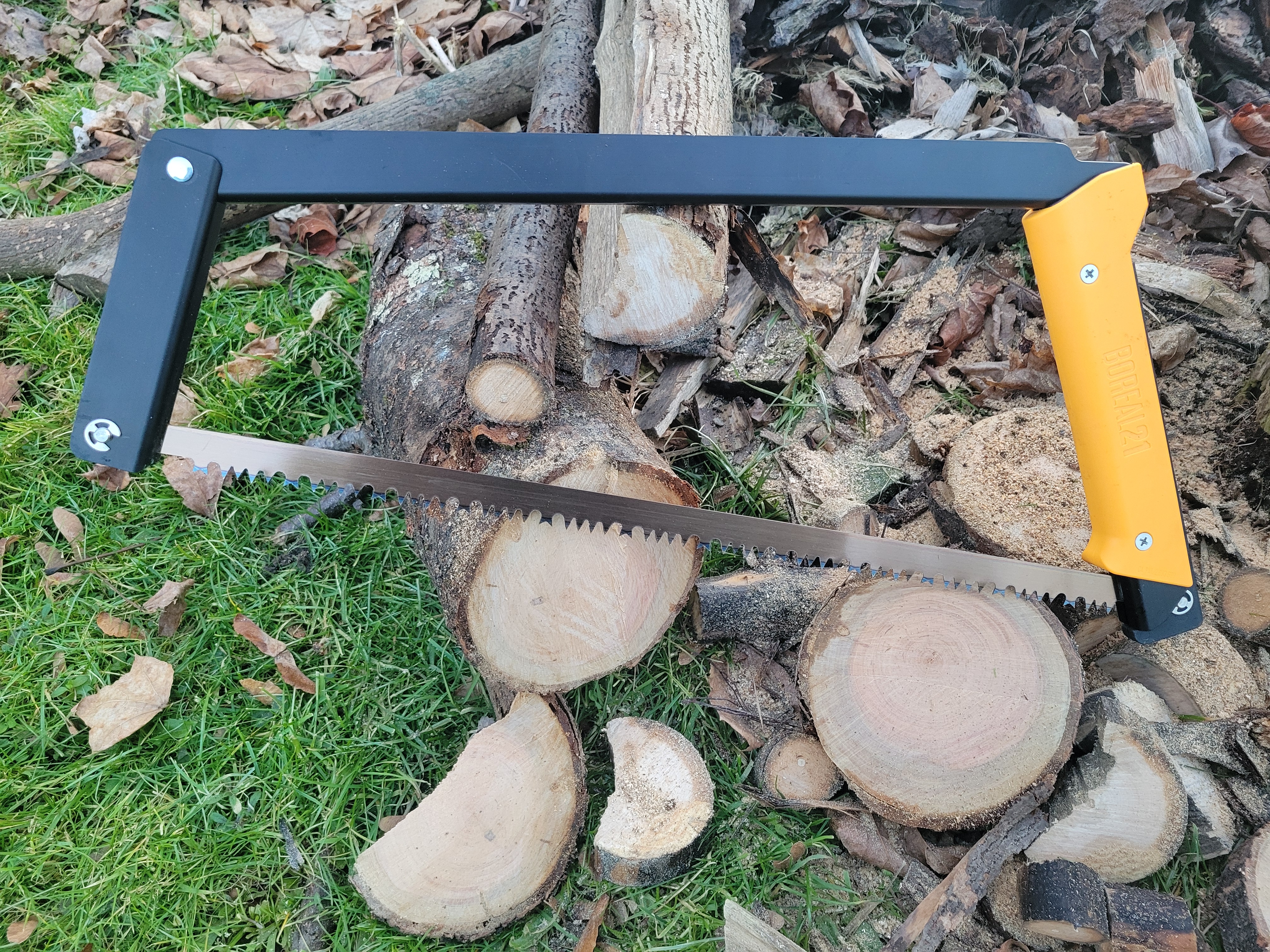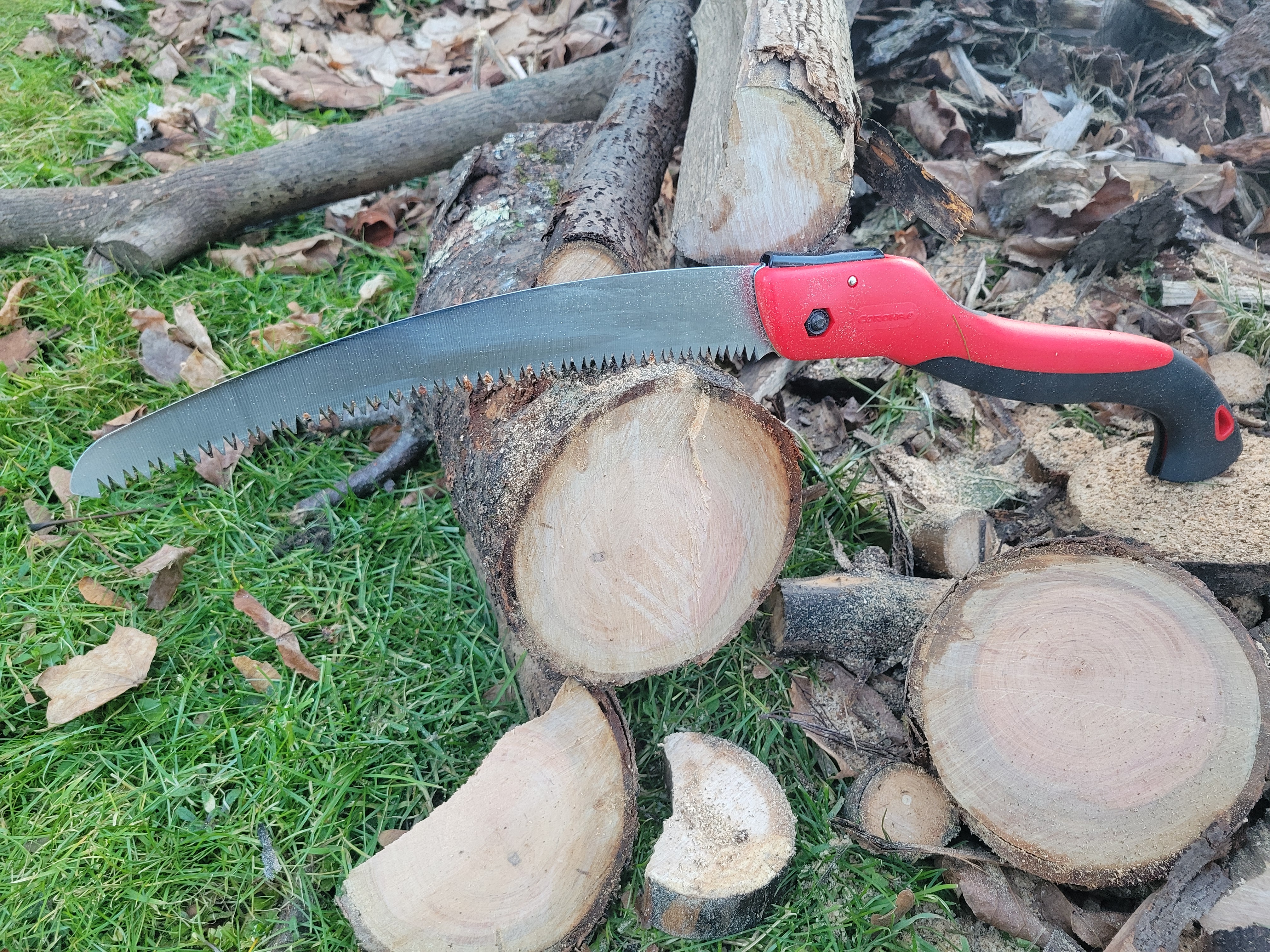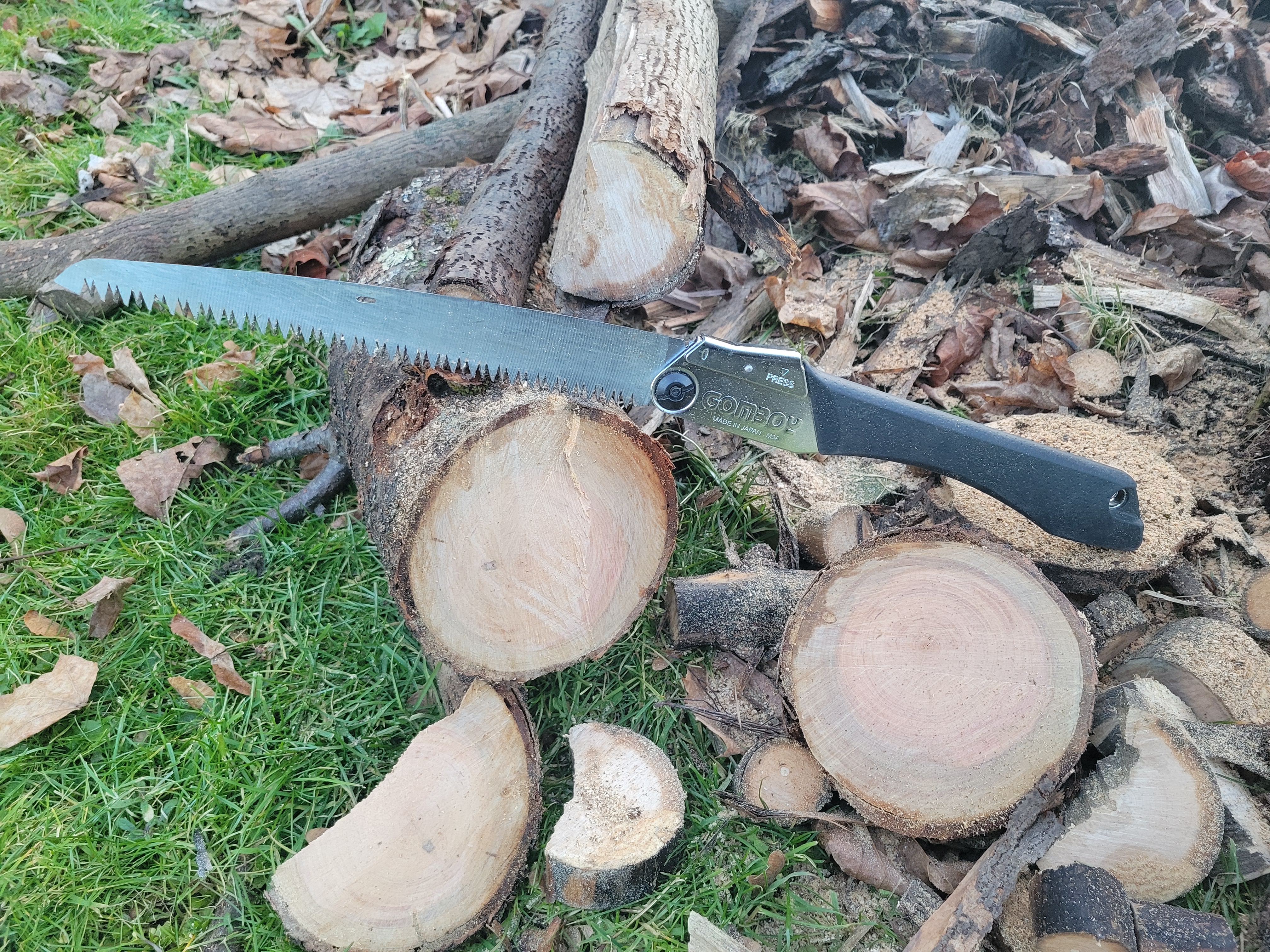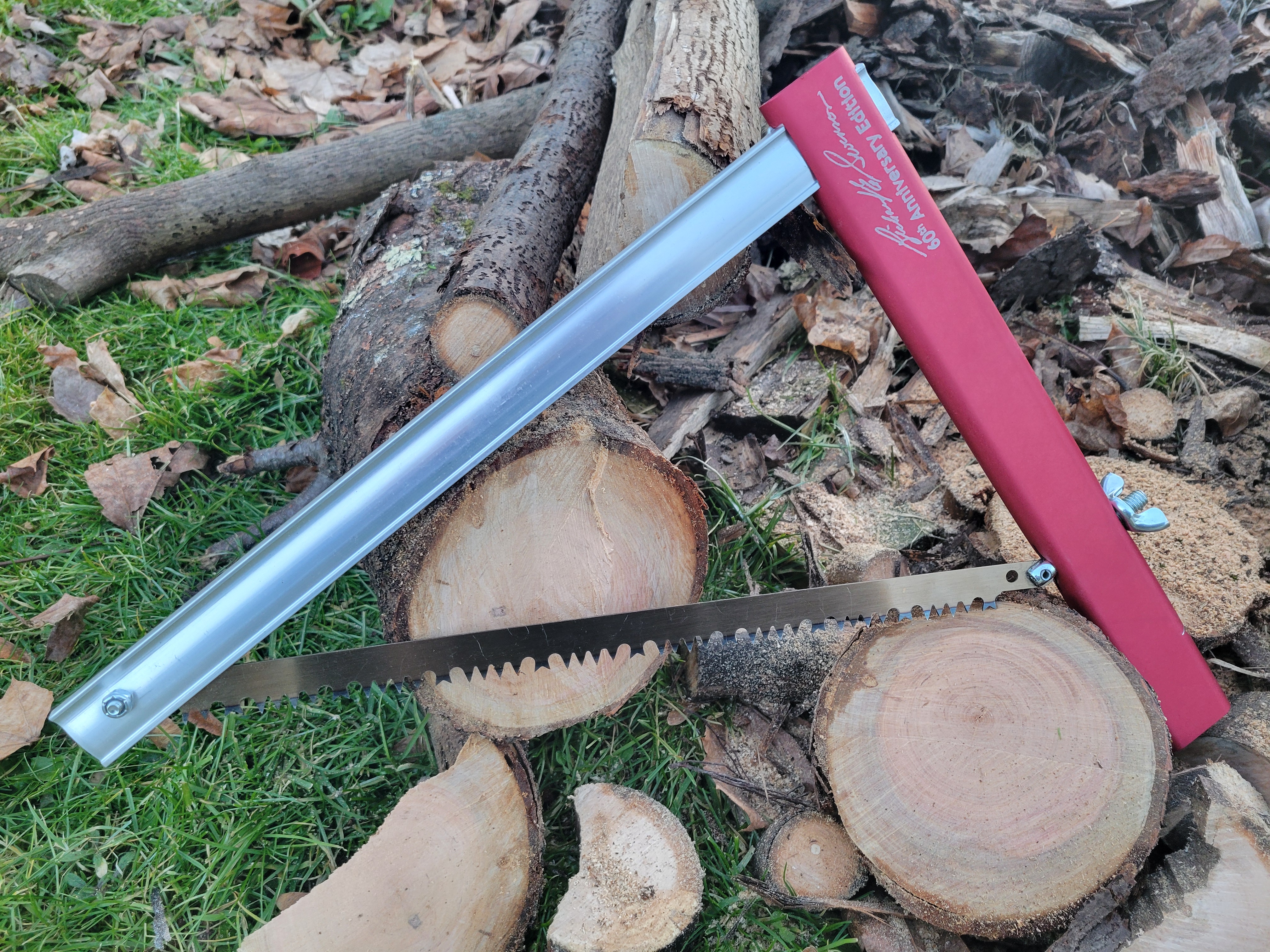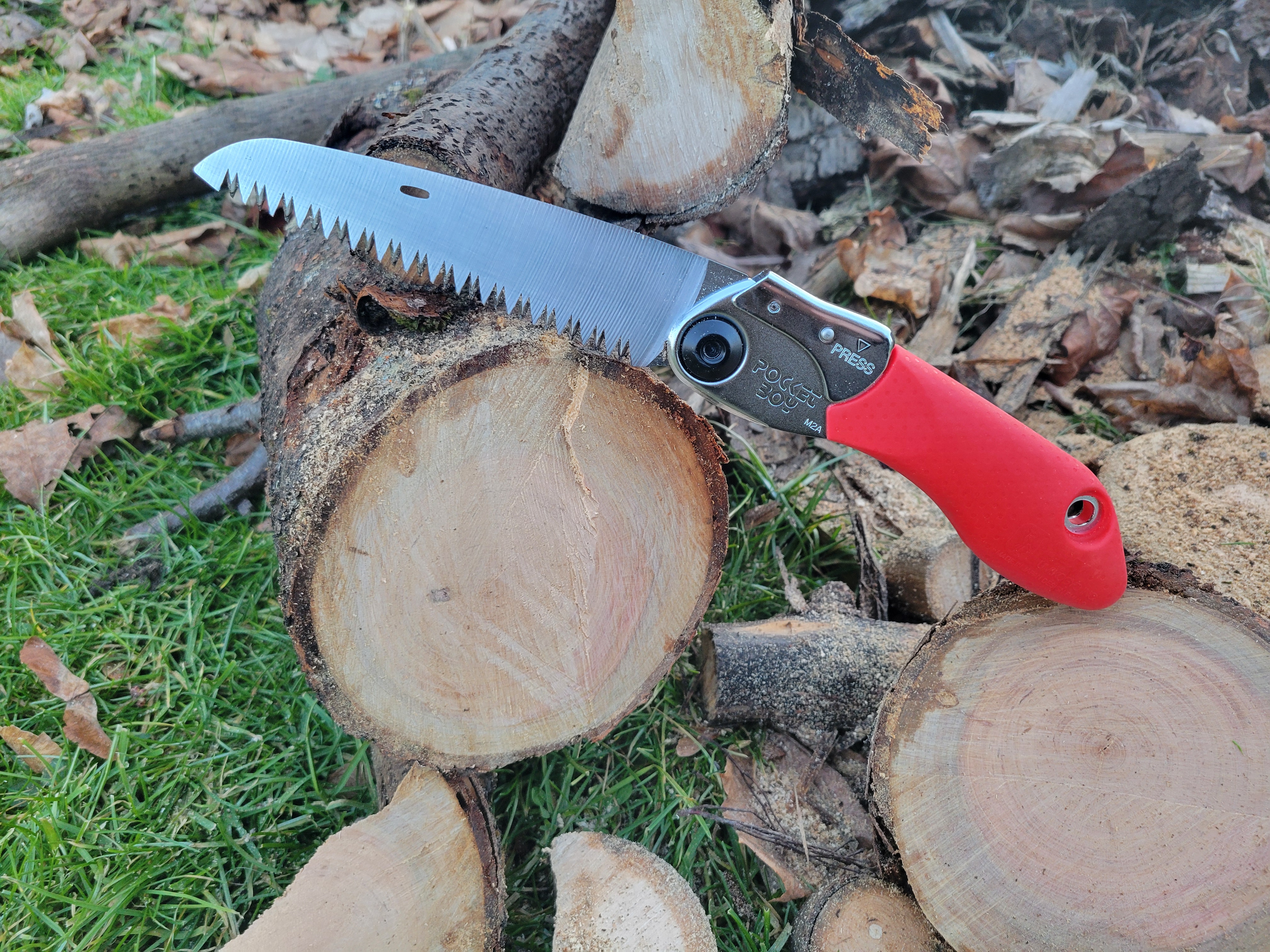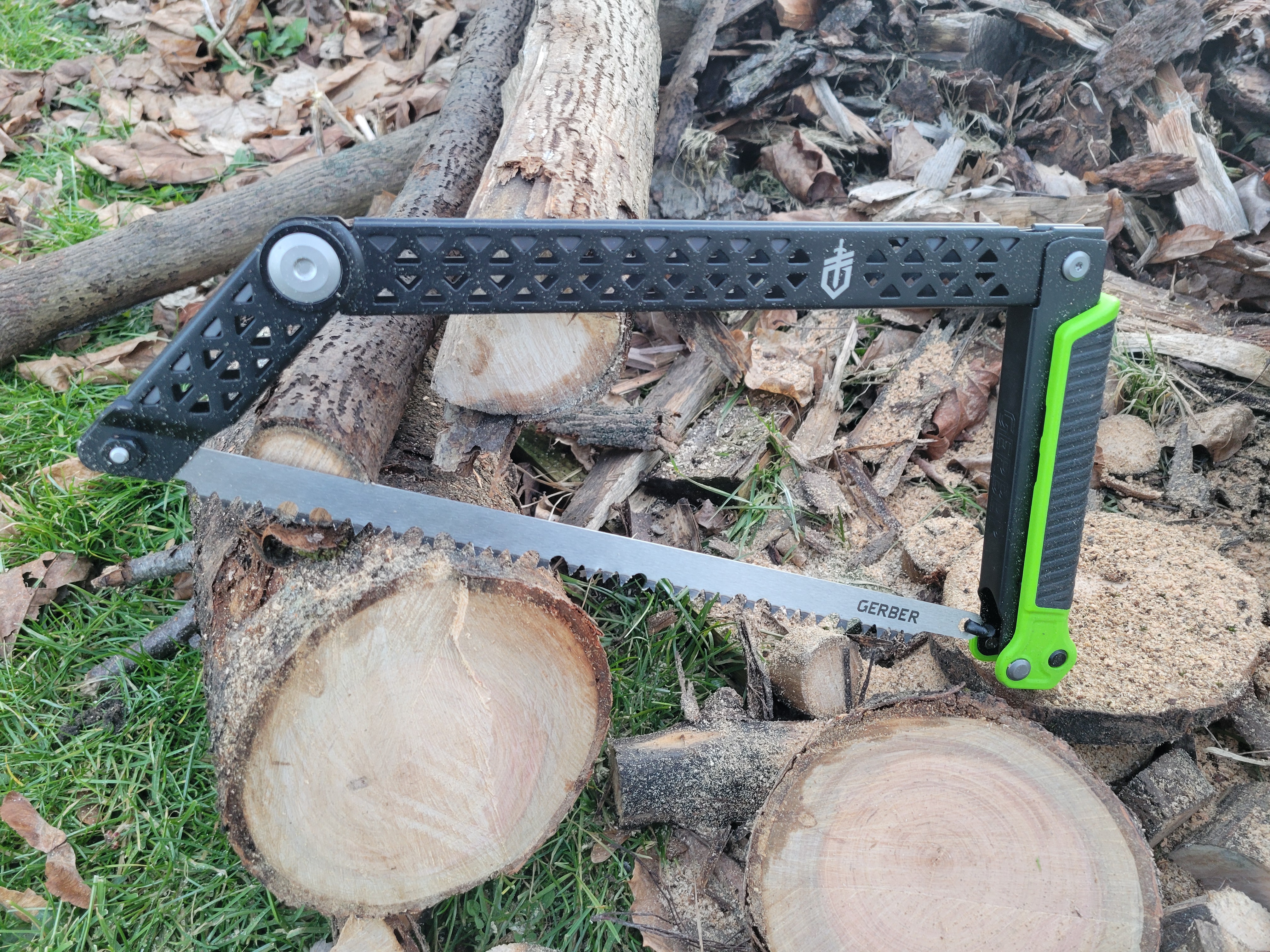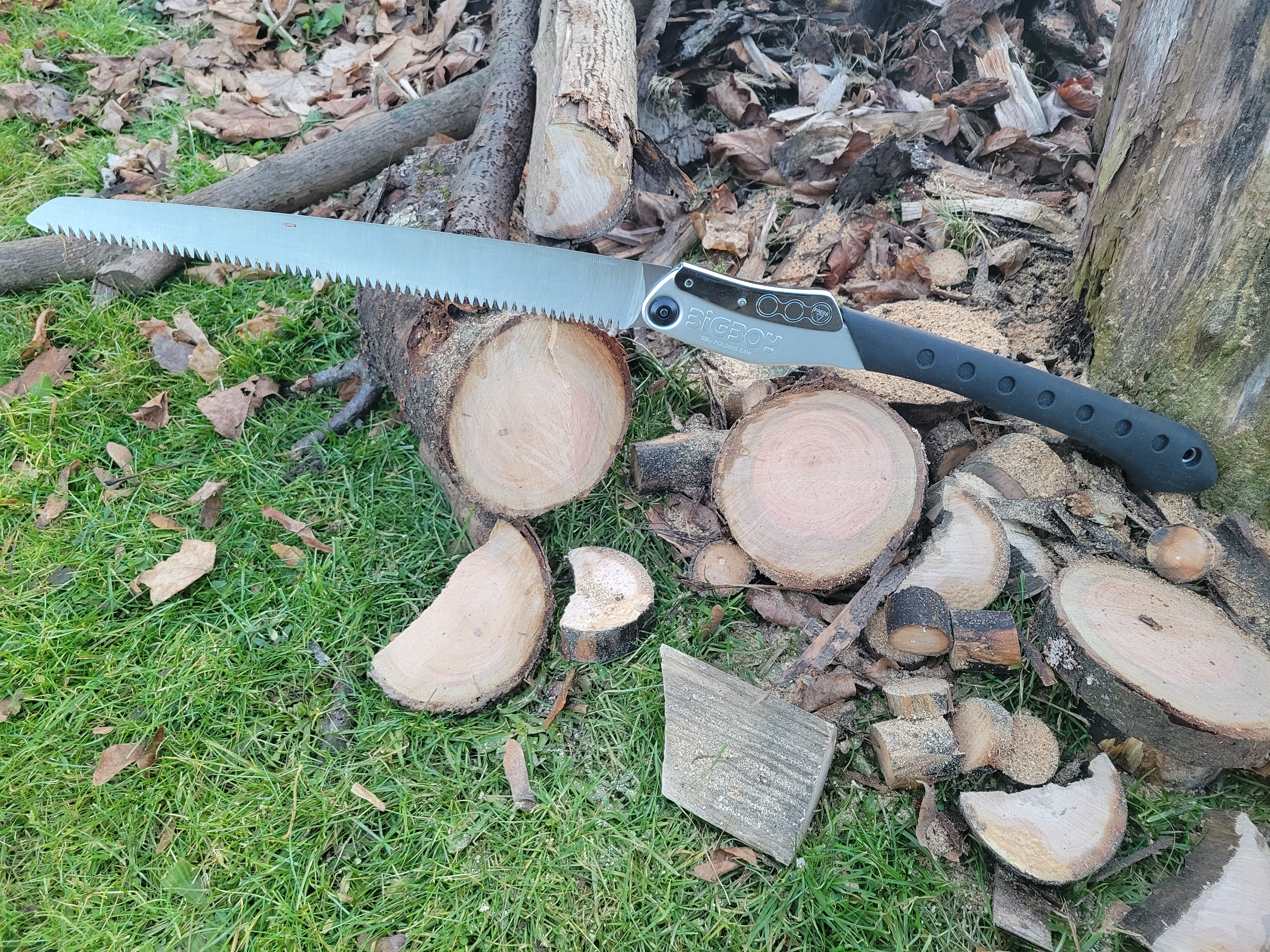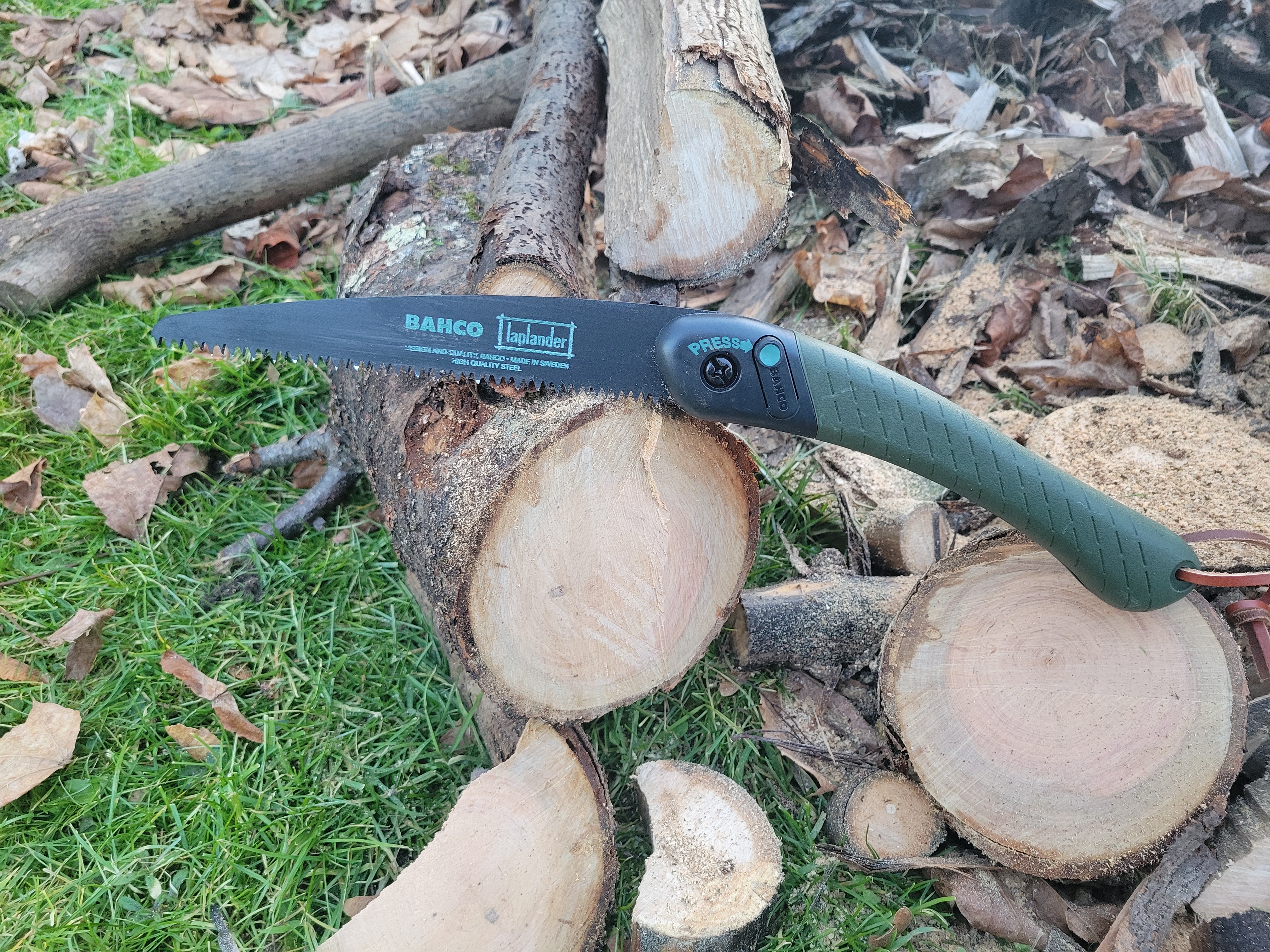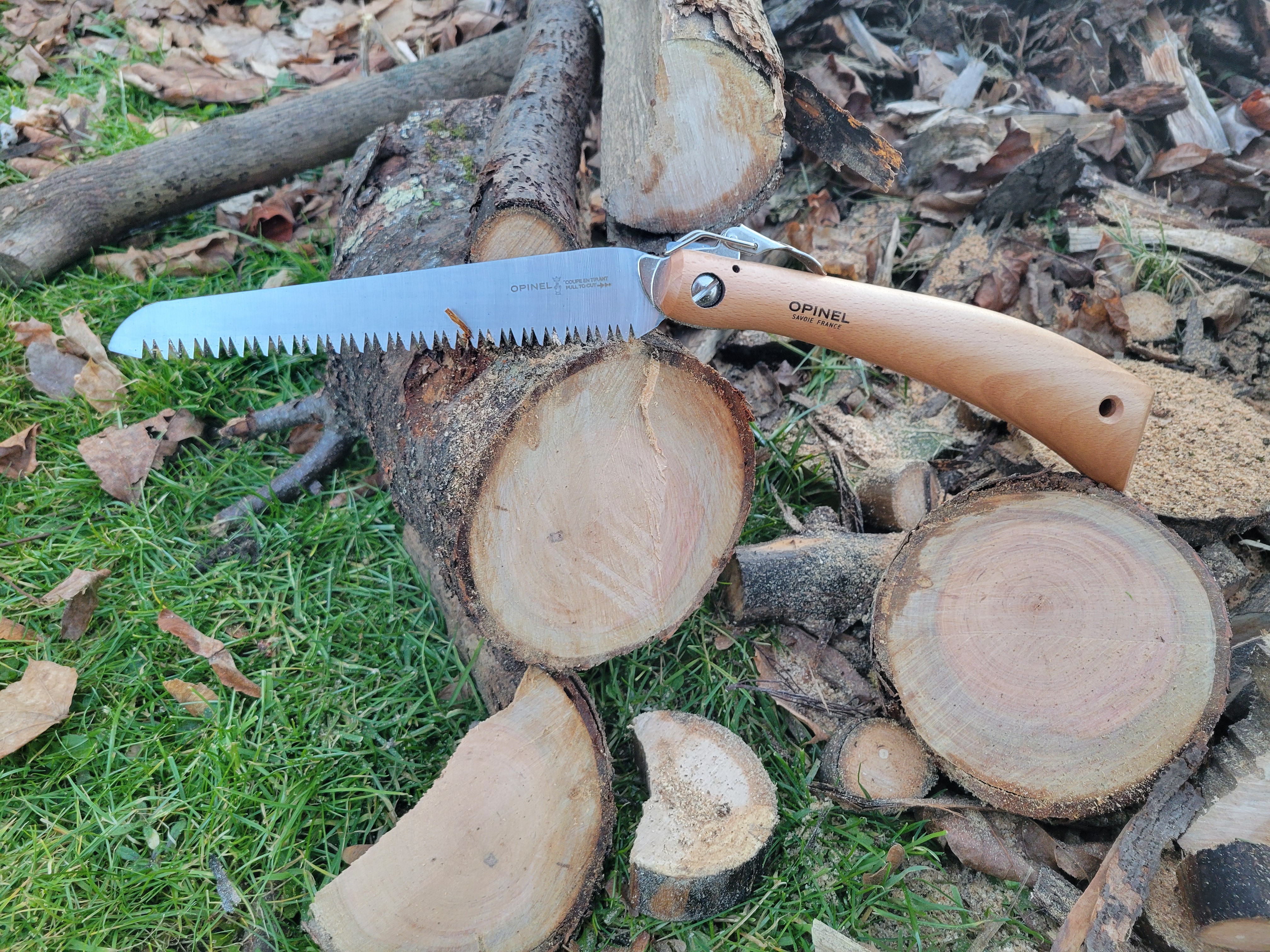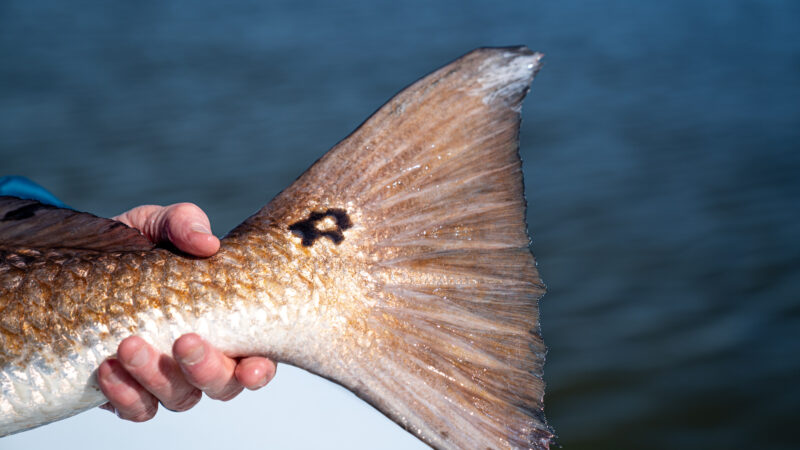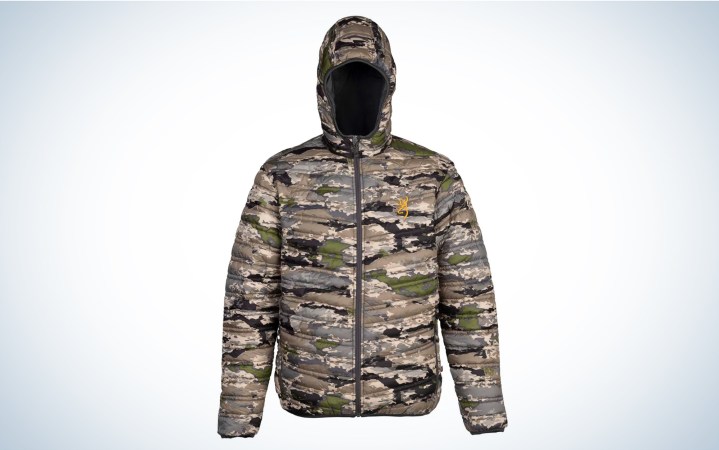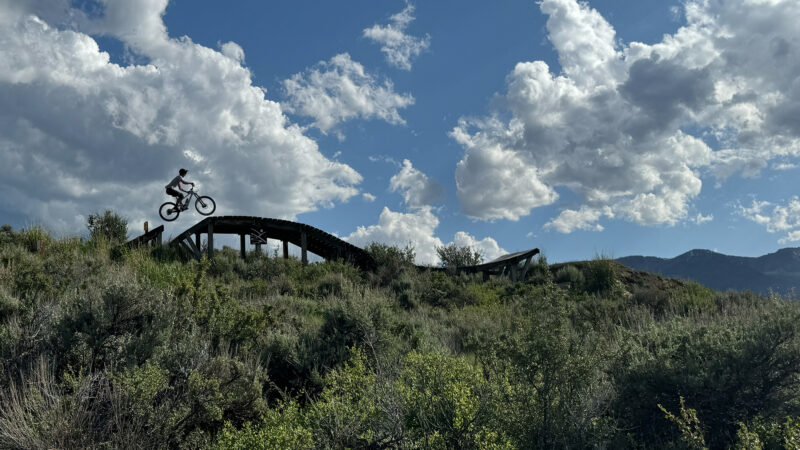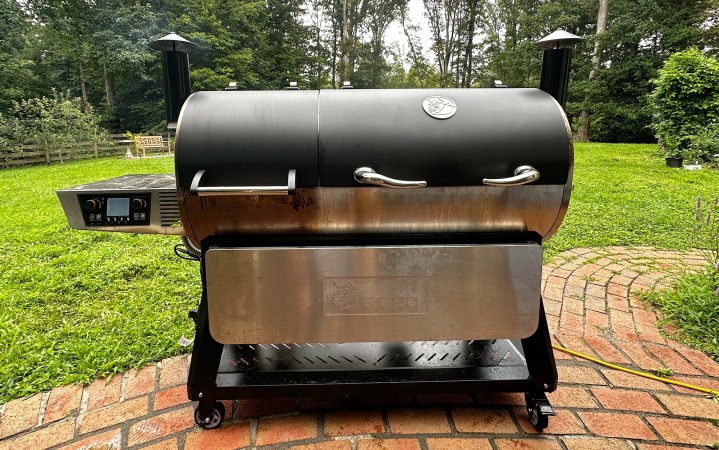The Best Folding Saws of 2024, Tested and Reviewed
We may earn revenue from the products available on this page and participate in affiliate programs. Learn More ›
Best Overall
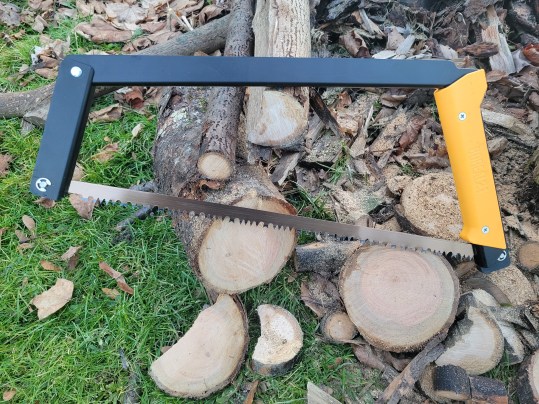
AGAWA Boreal
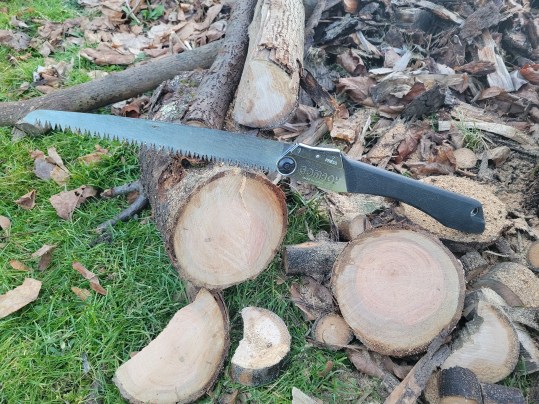
Silky BigBoy
Best Straight Saw
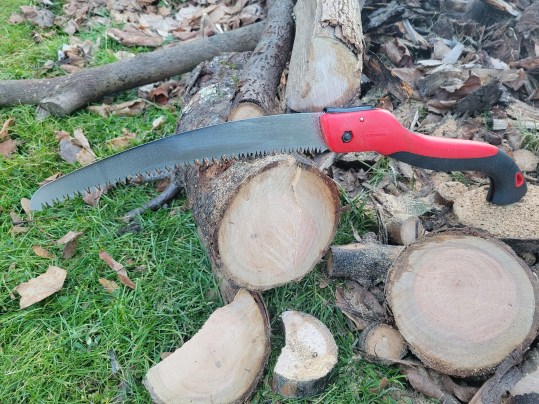
Corona RazorTOOTH
Folding saws have been around for quite a while but have recently become much more popular. That popularity is thanks, in part, to their prominent appearance on several survival shows and popular YouTube channels.
Their uses go well beyond survival and bushcraft, though. Hunters, campers, backpackers, and gardeners use them too. Why? They are handy tools that can take on a wide variety of tasks without the bulk of a traditional saw and without the risks of an ax.
If you need a convenient and portable tool for cutting limbs, you’ll need one of the two types of folding saws: bow saws and straight saws. I tested both types to help you find the best folding saw.
- Best Overall: Agawa Boreal 21
- Best Straight Saw: Corona RazorTOOTH 7265
- Best for Big Jobs: Silky Professional BigBoy 360
- Best for Backpacking: Sven Saw 15-inch
- Best Compact: Silky Professional PocketBoy 130
- Gerber Freescape Camp Saw
- Silky Gomboy 240
- Bahco Laplander Folding Saw
- Opinel No.18 Folding Saw
How I Tested the Best Folding Saws
To test folding saws, I cut four-month seasoned maple and some 10-month seasoned cherry firewood in the following diameters:
- 1.5-inch maple
- 4-inch maple
- 6-inch cherry
- 10-inch maple (large saws only)
Realistically, I wouldn’t want to have to cut a 10-inch log with any folding saw for more than a few cuts because they aren’t made for cutting timber that big. But, if you have the need to clear a forest road or a logging trail of some downed trees, the bigger saws will certainly get the job done when needed.
The Best Folding Saws: Reviews and Recommendations
Best Overall: Agawa Boreal 21
Key Features
- Weight: 18 ounces
- Cutting Edge: 17.5 inches
- Open/ Closed Length: 21.25 inches/ 21.5 inches
- Bow Saw
- Price: $80
- Made in Canada with some global parts
Pros
- Accepts any 21-inch bow saw blade
- Sturdy construction that’s better than my fixed bow saws
- Comfortable grip
- Automatic blade tensioning
Cons
- Heaviest saw tested at 1 pound 2 ounces
The Agawa Boreal 21 is the most well-thought-out folding saw I’ve ever used. The blade is totally concealed when it’s folded, and the grip is comfortable for extended cutting. The blade is stiff, secure, doesn’t rotate, and never needs adjusting. Another reason I chose this as the best folding saw overall is that the vertical grip is less tiring to use than the horizontal grips of a straight saw.
The Boreal is also available in 15 and 24-inch configurations, but I think the 21-inch I have is the sweet spot. It’s deep enough to cut through 7-inch diameter logs without rotating them, yet it’s handy and controllable enough for trimming small stuff. The Agawa made it through the 10-inch maple log by changing my cutting angle. I was using the all-purpose blade, but “aggressive” and “bone/meat” blades are available, making this a very versatile saw. Changing blades is easy, and the saw comes with an extra set of circlips for the blade pins, which is a nice touch. If you want your saw to cut fast and be able to do well in almost any situation, the Agawa Boreal 21 should be at the top of your list.
Best Straight Saw: Corona RazorTOOTH 7265
Key Features
- Weight: 9.6 ounces
- Cutting Edge: 10 inches
- Open/ Closed Length: 21.125 inches / 12 inches
- Straight Saw
- Price: $25
- Made in Korea
Pros
- Replacement blades available
- Blade locks open and closed
- Comfortable grip
- Lightweight
Cons
- When closed, some of the teeth are exposed due to the handle shape
The Corona Saw was originally designed to be a pruning saw for the orange groves in Southern California, but it found its way into plenty of other environments because it works so well. I don’t know if it was because of the curved blade, the extremely sharp teeth, or a combo of the two, but the Corona RS 7265 really ripped through the cuts in my testing. Even though there were a few saws with longer blades, the Corona could cut through with the same number of strokes and was flat-out impressive. The hook at the end of the handle also helped when really getting after it by locking in my hand and allowing for more force with less effort. There is also rubber on the grip up near the front if you are doing smaller, more controlled cuts. The Corona cut fast, felt comfortable, and locked in the open and closed positions. This is a great saw for logs up to about 6 inches for straight cuts but it could go bigger if the log was rotated. The Corona also manages to be quite light while retaining a sturdy feel.
Read Next: A Beginner’s Guide to Bushcraft
Best for Big Jobs: Silky Professional BigBoy 360
Key Features
- Weight: 16 ounces
- Cutting Edge: 14 inches
- Open/ Closed Length: 30 inches / 16 inches
- Straight Saw
- Price: $78
- Made in Japan
Pros
- Replacement Blades available with different tooth counts
- Two position lock when open for different cutting angles
- Secure rubber grip
- Smooth cutting due to specially ground teeth
Cons
- A little big and heavy for one-handed use
- Doesn’t lock in the closed position
The Silky BigBoy certainly lives up to the “big” in its name. It was the best saw for cutting through the 10-inch piece of wood, and the grip was comfortable for two-handed cutting. If you want the capability to cut some bigger logs, the BigBoy is the saw for you. I wasn’t a huge fan of the saw when using it with one hand, and it felt a bit long and cumbersome compared to the smaller folding saws. The BigBoy could cut fast when I used the full length of the blade and both hands. Mine has medium teeth, but there are fine and large-tooth blades available. I think with the aggressive blade and two hands, this saw will really fly through bigger pieces.
I never felt like I was sliding on the handle, which meant I didn’t have to grip as hard and used less energy. If you want a folding saw that can take on the big stuff, look no further than the Silky BigBoy.
Best for Backpacking: Sven Saw 15-inch
Key Features
- Weight: 10.8 ounces
- Cutting Edge: 15 inches
- Open/ Closed Length: 19 inches/ 17.25 inches
- Bow saw
- Price: $42
- Made in USA
Pros
- Common blade size means easy replacements
- Simple Construction
- Multiple Grip locations
- Lightweight and easy to pack
Cons
- Easy to set up unless your fingers are cold, then the wingnut can be difficult
- Blade can move if not properly tensioned
The Sven Saw is in its 60th year of production up in Duluth, Minnesota and it’s still going strong. Like the Agawa, this uses common bow saw blades, which are light and widely available. This is the best backpacking saw because it’s lightweight, and the easiest to pack when folded. No portion of the blade is exposed, and it’s barely more than .5-inch thick and 1.5-inches wide. Once you make camp, put it together and get some firewood ready.
The saw’s grip and frame are hard anodized aluminum with a nice red color that makes it hard to lose in the woods. While there are slightly lighter saws out there, I think the Sven Saw performs better, and is more comfortable to use than lighter options. The handle extends down below the blade so you can get a full stroke without worrying about smashing your fingers into the log while cutting. You can also brace your other hand against the top of the handle for extra oomph on the push stroke. While many saws only cut on the pull stroke, the blade on the Sven Cuts in both directions. While it can be a little cumbersome to set up if your fingers are numb, it’s still straightforward to do and effective once it’s together.
Read Next: Best Survival Knives
Best Compact: Silky Professional PocketBoy 130
Key Features
- Weight: 6.25 ounces
- Cutting Edge: 5 inches
- Open/ Closed Length: 11.5 inches / 6.5 inches
- Straight Saw
- Available in large, medium, and fine-tooth blades
- Price: $44
- Made in Japan
Pros
- Compact construction fits in your pocket
- Comfortable grip
- Two Position Lock for line cuts and flush cuts
Cons
- Short blade limits the size of the piece that can be cut
- Does not lock in the closed position
The Silky PocketBoy is a tenacious little saw. While it can easily fit in a front or back pocket, it can still chew through pieces up to 4 inches in diameter. Mine has large teeth, which are the most aggressive cutters, and I was very impressed by how quickly the little saw took care of business. This is a great saw for pruning trees and bushes around the house and knocking down branches when you’re putting up a treestand. The grip is comfortable, and the saw is very easy to control. If you need something to make smaller, more precise cuts for a bushcraft project, the PocketBoy is a great option for you.
Gerber Freescape Camp Saw
Key Features
- Weight: 14.6 ounces
- Cutting Edge: 10.5 inches
- Open/ Closed Length: 14.75 inches/ 14 inches
- Bow Saw
- Accepts 12-inch bow saw blades
- Price: $55
- Made in China
Pros
- Stiff Frame with no wiggle
- Comfortable rubber overmolded grip
- Adjustable blade tension
Cons
- Heavy for its size
- Blade retention hook spins easily, affecting tension
The Gerber Freescape Saw is easy to unfold and fasten, and does a good job once deployed. While larger wood can be cut by rotating the wood or changing the position of the saw, the Freescape is really intended for wood 4 inches and under. When I was using the saw, the grip was comfortable and secure, but when I was sawing fast, I did bang my knuckles into the piece a few times. A bow saw this small will always run into that problem. But if you can keep your strokes to the right length, the Freescape can make a pile of firewood in short order. This would be a good saw for car camping and shorter backpacking trips where weight and cutting larger pieces aren’t a priority. Overall, the Freescape was a solid performer for a compact folding saw.
Silky Gomboy 240
Key Features
- Weight: 9.3 ounces
- Cutting Edge: 9.25 inches
- Open/ Closed Length: 20 inches / 10.6 inches
- Straight Saw
- Price: $55
- Made in Japan
Pros
- Fast Cutting
- Comfortable Rubberized grip
- Two Position Blade
Cons
- Blade does not lock closed
- Blade bends easier than some others
The Silky Gomboy has been a popular folding saw for quite a while now because it just works well. It has solid construction, good cutting performance, and multiple blade options. My saw has the medium blade, which is an all-purpose blade that’s fairly aggressive but can also make nice clean edges on cuts. One of my only complaints about the Silky is that the blades are more susceptible to bending and breaking than others. If the wood binds and pinches the blade as you are pushing hard, there is a possibility that you will bend the blade. Mine has a slight warp on the end from getting caught. All folding saws can have this problem when they bind, but I have found the Gomboy, in particular, to have a greater tendency to bend. That being said, I have a Gomboy that is about three years old and have cut a ton with it while making brush blinds and setting tree stands, and it hasn’t failed me yet.
Bahco Laplander Folding Saw
Key Features
- Weight: 6.75 ounces
- Cutting Edge: 7.25 inches
- Open/ Closed Length: 15.8 inches / 9.25 inches
- Straight Saw
- Price: $25
- Made in Sweden
Pros
- Tough blade that rarely bends
- Inexpensive, but not cheaply built
- Comfortable textured grip
- Locks in open and closed positions
Cons
- On the slower side for cutting
There was a time where the Bahco Laplander was considered the standard folding saw in most Bushcraft circles. It stays sharp, performs well, has muted colors, and it’s not expensive.
The Laplander has seven teeth per inch, making it an all-purpose blade, but the shorter teeth aren’t raked as much as some others, which means it gives up some cutting speed. But the Laplander makes up for that speed in longevity. I have one Laplander that is about six years old, and it’s still pretty darn sharp. The Laplander also comes with a lanyard, which, if nothing else, provides a means to ensure it won’t fall out of a pocket. Tip: I tie a lark’s head knot on another strap for extra insurance.
If you’re looking for an inexpensive, tough saw, and that doesn’t have to be the fastest cutter, check out the Laplander.
Opinel No.18 Folding Saw
Key Features
- Weight: 7.25 ounces
- Cutting Edge: 7.1 inches
- Open/ Closed Length: 16 inches/ 9.25 inches
- Straight Saw
- Price: $45
- Made in France
Pros
- Aggressive teeth cut well
- Solid Beechwood grip is strong and sturdy
- Tension lock keeps blade from wiggling
Cons
- Thin blade cuts well, but bends easily under forward pressure or pinch
- Wood grip is polished and can be slippery with gloves
The Opinel No.18 Folding saw is a pretty solid medium-small folding saw that cuts well, and looks cool. The thin blade means you don’t have to remove as much material, but also makes the blade more prone to bending. With my first use, I bent the blade twice in about 5 seconds. I needed to lighten my forward stroke so as not to bind and bend the saw. The bends were easy enough to correct by hand, but just be aware it takes some finesse. With a lighter touch, the Opinel performs well, and lives up to the good reputation it has for its solid, inexpensive knives. For lighter use in the garden or for pruning brush, the Opinel will cut cleanly and quickly and serve you well. For heavier use, just be conscious about not binding the blade up.
How to Choose a Folding Saw
Use Case
As with most outdoor items, the first consideration in choosing a folding saw is how you intend to use it. Do you want an all-purpose saw for home, camp, your hunting pack, and building a shelter that has to be able to cut larger wood? Look at the Boreal 21 or Silky BigBoy.
Or, are you just trimming some branches and untamed bushes around the house? Well, any of these will do for that. Are you interested in trying your hand at bushcraft, but are on a budget? Grab the Laplander.
The important part is to be honest about what you’re doing with the saw. You don’t want to have too much saw for little jobs, or be stuck cutting an 8-inch log with a 5-inch blade.
Style
The next consideration will be style, and I don’t mean how the saw fits your décor. I mean a bow saw or a straight saw. If you’re mainly bucking firewood and knocking down larger branches, I find the more vertical grip of a bow saw more comfortable and less tiring.
But, in tight areas with lots of limbs, a bow saw gets in the way. A straight saw however, shines in tight spaces and where maneuverability counts. They might not be as comfy for tons of cutting, but they blow a bow saw out of the water in a tight spot. They also tend to weigh less for the same blade length.
Price
The saws here range anywhere from $25 to over $80, and some get a lot higher than that. More expensive does not always equal better for you. If you are on a budget, don’t hesitate to pick up the saws on the lower end of the range. They will serve you very well. But, if you want maximum capability, the more expensive saws are bigger and tougher to handle the extra work and bigger logs.
FAQ
This generally refers to the TPI, or Teeth Per Inch, in straight folding saws. “Large” means less teeth per inch, usually around 6 TPI. Medium usually works out to 7-9 TPI, and Fine has a TPI around 15-18. The less TPI, the more aggressive the cut, which usually means speed. A higher TPI makes finer cuts, not ragged or rough, but takes longer to make the cut.
A: Technically yes, but not practically. Sharpening these types of blades would take specialized equipment and really isn’t practical. As long as you aren’t hitting rocks or metal, these blades will stay sharp for a long time, and can be replaced without too much expense. These blade can also break, and if you’re planning on lots of heavy work out in the backcountry, it’s not too hard to carry a spare. The Bow Saws can accommodate spare blades alongside the one on the saw.
No, not really. But most saws can do enough so that you can get by with just one. For me, a larger folding bow saw is my go-to for bigger volume work, and a medium-sized straight saw covers the tight spots and smaller work. With a set up like that, you can take care of just about everything you might need to.
Final Thoughts on the Best Folding Saws
Folding Saws are great tools for camping, hunting, keeping up your property, or having fun with bushcraft. They are far better than an ax for bucking up wood and making precise cuts, and require less skill to use. They also don’t come with all the risks that an ax does. Once you honestly assess your needs, pick the saw that will suit them best, and have at it.
- Best Overall: Agawa Boreal 21
- Best Straight Saw: Corona RazorTOOTH 7265
- Best for Big Jobs: Silky Professional BigBoy 360
- Best for Backpacking: Sven Saw 15-inch
- Best Compact: Silky Professional PocketBoy 130
- Gerber Freescape Camp Saw
- Silky Gomboy 240
- Bahco Laplander Folding Saw
- Opinel No.18 Folding Saw
The post The Best Folding Saws of 2024, Tested and Reviewed appeared first on Outdoor Life.
